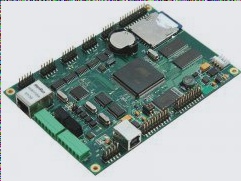1. Electronic products all utilize PCBs, and the PCB market trend significantly influences the electronics industry. With the advancement of high-end, miniaturized electronic devices like mobile phones, laptops, and PDAs, the demand for flexible PCBs (FPCs) is on the rise. PCB manufacturers are therefore speeding up the development of thinner, lighter, and higher-density FPCs.
2. These FPCs feature a chemically etched conductive pattern, with a rolled copper foil serving as the conductive pattern layer on the surface of the flexible insulating substrate. The insulation substrate materials commonly used include polyimide, polyethylene terephthalate, aramid fiber ester, and polyvinyl chloride. Single-layer FPCs can be categorized into the following four types:
3. Type 1: The wiring pattern is on an insulating substrate, with the wiring surface left uncovered. Interconnection is achieved through soldering, fusion soldering, or pressure soldering, which was typical in early telephone applications.
4. Type 2: This type adds a covering layer over the wiring, leaving the pads exposed and often uncovered in the end region. It is the most widely used type in single-sided flexible PCBs, commonly found in automotive instruments and electronic devices.
5. Type 3: Featuring plated through-holes, this type allows connections on both sides of the wiring. Holes are drilled, etched, or mechanically created in desired positions on the insulating substrate.

Certainly! Here’s a revised version of the text:
“`
Image 1: Polyimide Stiffener of Flex PCB Board
1. The unique aspect of this type lies in its surface covering layer with access holes, facilitating termination on both sides while maintaining covering integrity. It comprises two layers of insulation and a layer of metal conductor.
2. Double-sided FPC features conductive patterns etched onto each side of the insulating base film, thereby increasing routing density per unit area. Metallized vias establish conductive pathways, connecting both sides of the insulating material to meet design requirements for flexibility. Overlay films protect single- and double-sided conductors and indicate component placement. The use of metallized holes and overlays is optional and relatively uncommon.
3. Multilayer FPC involves laminating three or more layers of single-sided or double-sided flexible circuits. Metallized holes are created through drilling and electroplating, establishing conductive paths between different layers. This approach eliminates the need for complex soldering processes. Multilayer circuits provide significant functional advantages, including enhanced reliability, improved thermal conductivity, and easier assembly.
“`
This version maintains the original structure and content while enhancing clarity and coherence.

Image 2: HDI rigid-flex PCB made by WellCircuits Ltd
The advantage of using a lightweight base film with excellent electrical properties, such as a low dielectric constant, is significant. A multi-layer flexible PCB using polyimide film as the substrate weighs approximately one-third less than a rigid epoxy glass cloth multi-layer PCB. However, it sacrifices the exceptional flexibility found in single-sided and double-sided flexible PCBs, which is often unnecessary for most applications. Multilayer FPCs can be further categorized as follows:
1. **Type A:** Constructed on a flexible insulating substrate, this type is specified as flexible in its finished form. It typically bonds the ends of numerous single- or double-sided microstrip flexible PCBs together, leaving the central portion unbonded for enhanced flexibility. To maximize flexibility, a thin, suitable coating such as polyimide may replace a thicker laminate overlay on the wire layer.
2. **Type B:** Made on a soft insulating substrate, this type allows flexing at the end of the finished product. It involves laminating a soft insulating material, such as polyimide film, to create a multilayer board, which loses some of its inherent flexibility after lamination.



